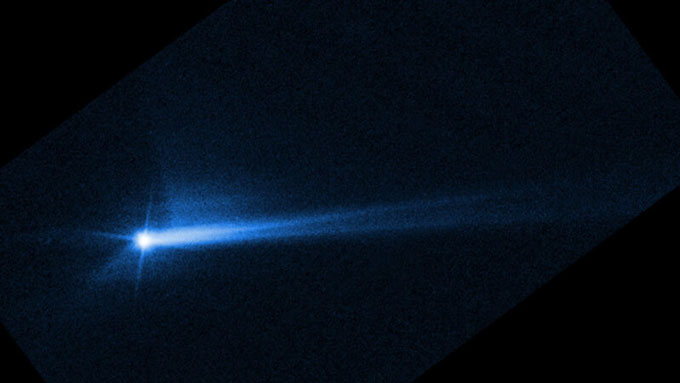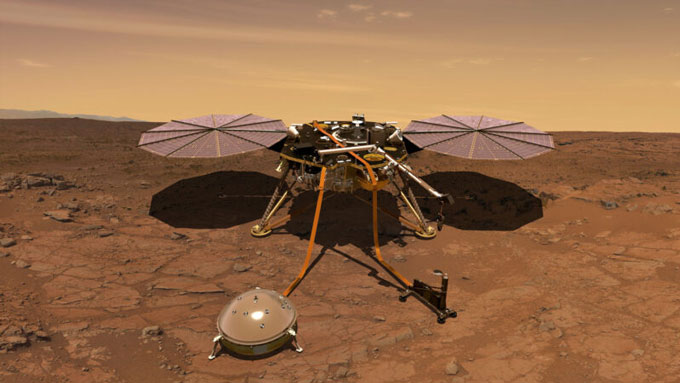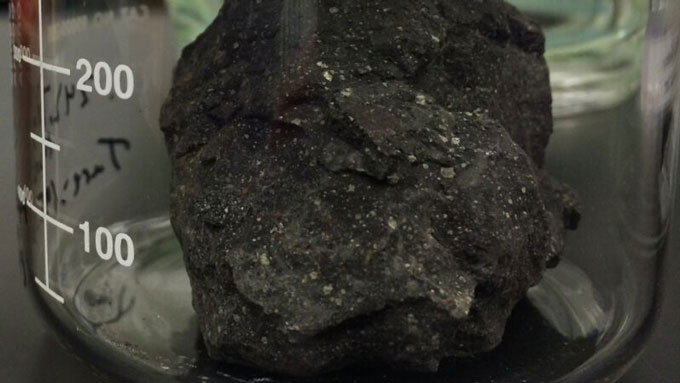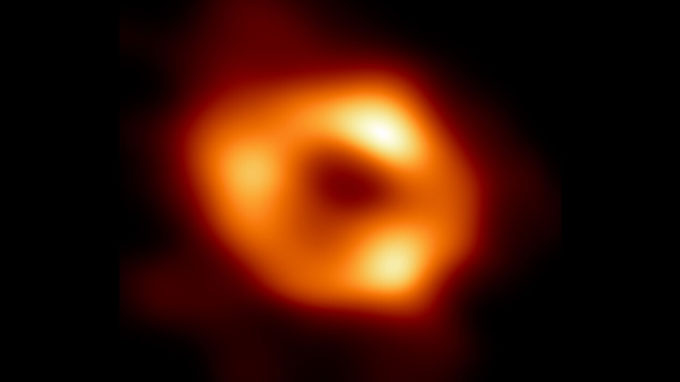While the stunning images from the James Webb Space Telescope captured space fans’ attention this year, other telescopes and spacecraft were busy on Earth and around the solar system (SN Online: 12/7/22). Here are some of the coolest space highlights that had nothing to do with JWST.
Back to the moon
After several aborted attempts, NASA launched the Artemis I mission on November 16. That was a big step toward the goal of landing people on the moon as early as 2025 (SN: 12/3/22, p. 14). No human has set foot there since 1972. Artemis I included a new rocket, the Space Launch System, which had previously suffered a series of hydrogen fuel leaks, and the new Orion spacecraft. No astronauts were aboard the test flight, but Orion carried a manikin in the commander’s seat and two manikin torsos to test radiation protection and life-support systems, plus a cargo hold full of small satellites that went off on their own missions. On December 11, the Orion capsule successfully returned to Earth, splashing down in the Pacific Ocean near Mexico (SN Online: 12/12/22).
Science News headlines, in your inbox
Headlines and summaries of the latest Science News articles, delivered to your email inbox every Friday.
Client key* E-mail Address* Sign up
Thank you for signing up!
There was a problem signing you up.
DART shoves an asteroid
NASA’s DART spacecraft successfully nudged an asteroid into a new orbit this year. On September 26, the Double Asteroid Redirection Test slammed into asteroid Dimorphos, about 11 million kilometers from Earth at the time of impact. In October, NASA announced that the impact shortened Dimorphos’ roughly 12-hour orbit around its sibling asteroid, Didymos, by 32 minutes (SN: 11/5/22, p. 14). Dimorphos posed no threat to Earth, but the test will help inform future missions to divert any asteroids on a potentially dangerous collision course with our home planet, researchers say.
 This image from the Hubble Space Telescope shows a split stream of dust and rock streaming off the asteroid Dimorphos nearly 12 days after the DART spacecraft smashed into it.NASA, ESA, STSCI, HUBBLE
This image from the Hubble Space Telescope shows a split stream of dust and rock streaming off the asteroid Dimorphos nearly 12 days after the DART spacecraft smashed into it.NASA, ESA, STSCI, HUBBLE
Massive Marsquakes
The InSight Mars lander is going out on a high note. After scientists reported in May that InSight had recorded the largest known Marsquake, roughly a magnitude 5, news came in October that the lander’s seismometer had also detected the rumblings of the two biggest meteorite impacts ever observed on Mars. Those impacts created gaping craters and sent seismic waves rippling along the top of the planet’s crust.
The details of how those waves and others moved through the Red Planet gave researchers new intel on the structure of Mars’ crust, which is hard to study any other way. The data also suggest that some Marsquakes are caused by magma moving beneath the surface (SN: 12/3/22, p. 12). The solar panels that power the lander are now covered in dust after four years on Mars, a death knell for the mission.
 InSight’s seismometer, seen in the lower left of this artist’s rendition of the lander, detected Mars’ largest known quake this year.JPL-CALTECH/NASA
InSight’s seismometer, seen in the lower left of this artist’s rendition of the lander, detected Mars’ largest known quake this year.JPL-CALTECH/NASA
Chemistry of life turns up in meteorites
All five bases in DNA and RNA have been found in rocks that fell to Earth. Three of the nucleobases, which combine with sugars and phosphates to make up the genetic material of all known life, had previously been found in meteorites. But the last two — cytosine and thymine — were reported from space rocks only this year (SN: 6/4/22, p. 7). The find supports the idea that life’s precursors could have come to Earth from space, researchers say.
 A two-gram chunk from this piece of meteorite contains two crucial components of DNA and RNA now identified for the first time in an extraterrestrial source.NASA
A two-gram chunk from this piece of meteorite contains two crucial components of DNA and RNA now identified for the first time in an extraterrestrial source.NASA
Sagittarius A* snapshot
The supermassive black hole at the center of the Milky Way became the second black hole to get its close-up. After releasing a picture of the behemoth at the heart of galaxy M87 in 2019, astronomers used data from the Event Horizon Telescope, a network of radio telescopes around the world, to assemble an image of Sagittarius A* (SN: 6/4/22, p. 6). The image, released in May, shows a faint fuzzy shadow nestled in the glowing ring of the accretion disk. That may not sound impressive on its own, but the result provides new details about the turbulence roiling near our black hole’s edge.
 The Event Horizon Telescope revealed this first-ever image of our galaxy’s supermassive black hole.Event Horizon Telescope Collaboration
The Event Horizon Telescope revealed this first-ever image of our galaxy’s supermassive black hole.Event Horizon Telescope Collaboration

